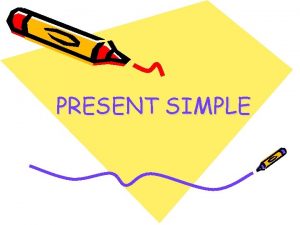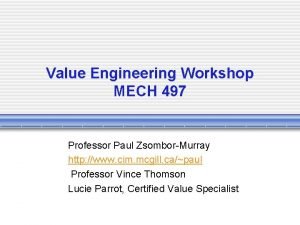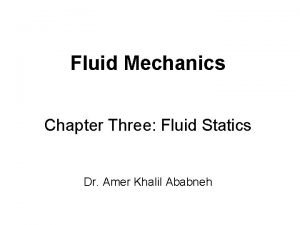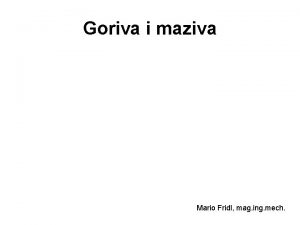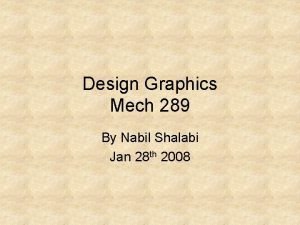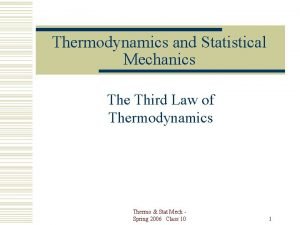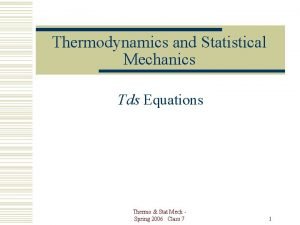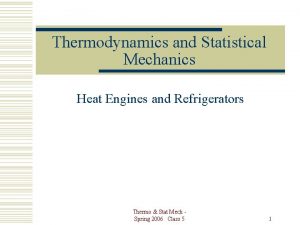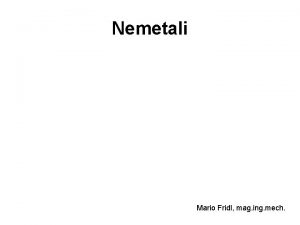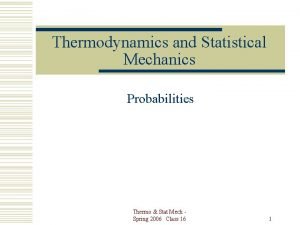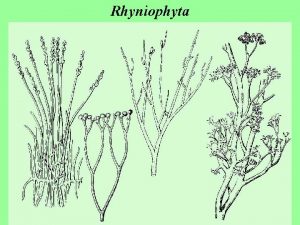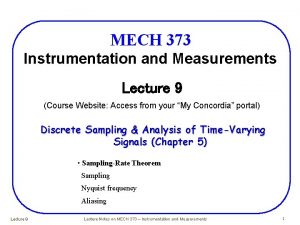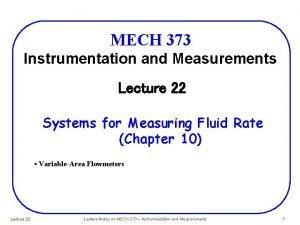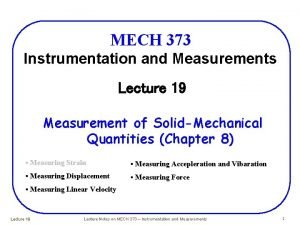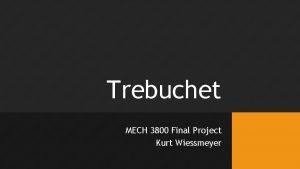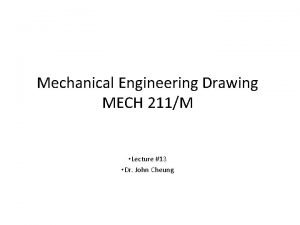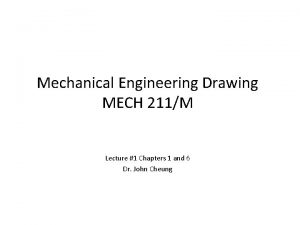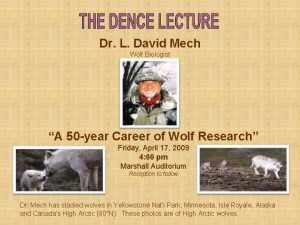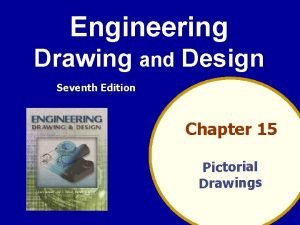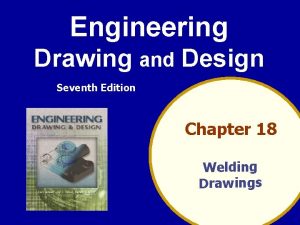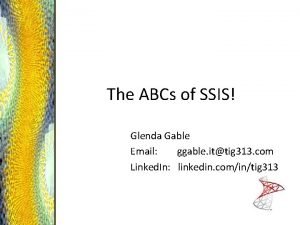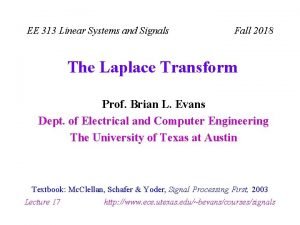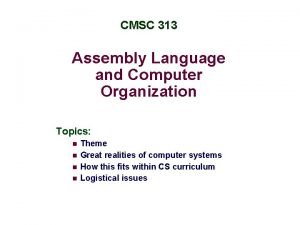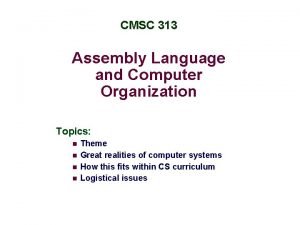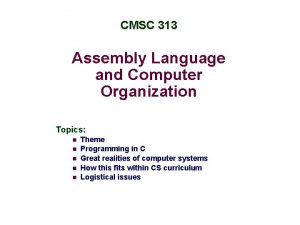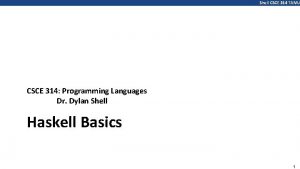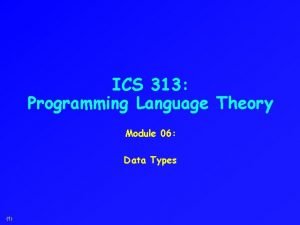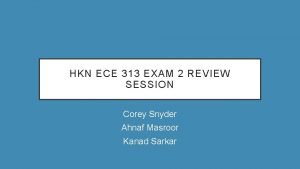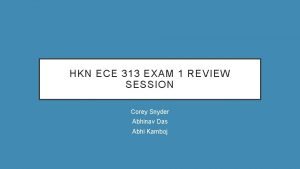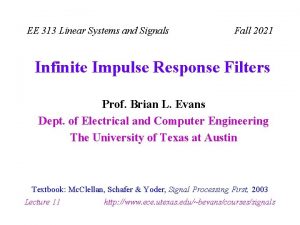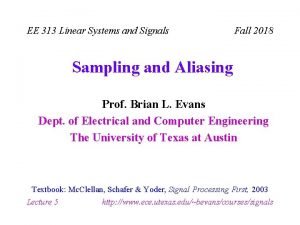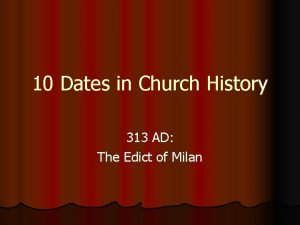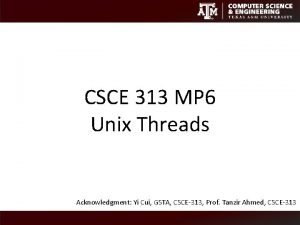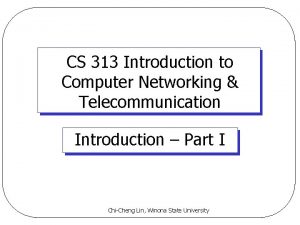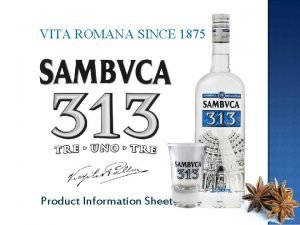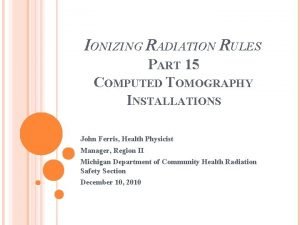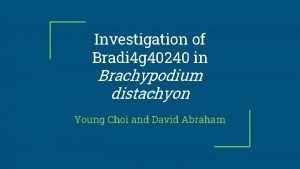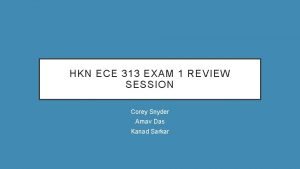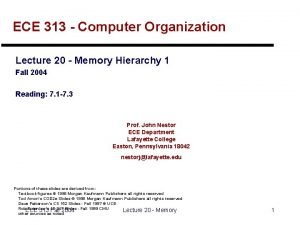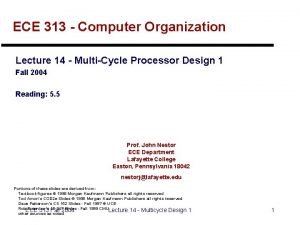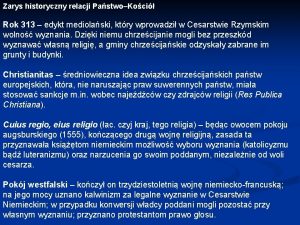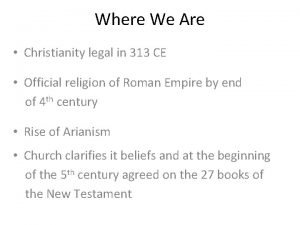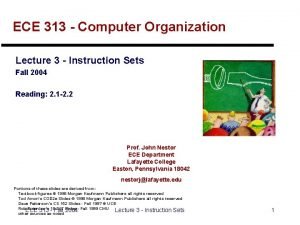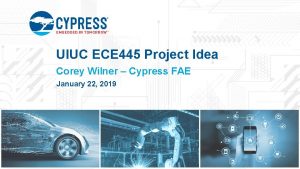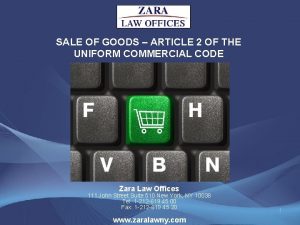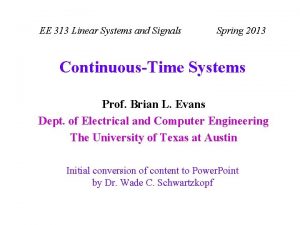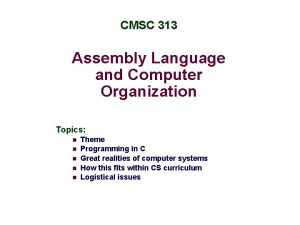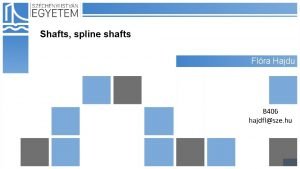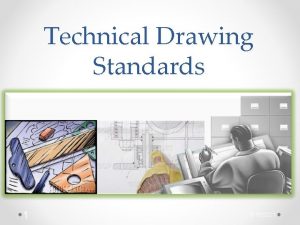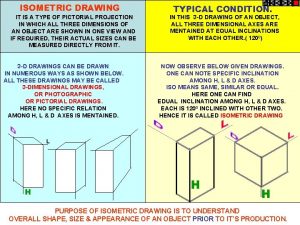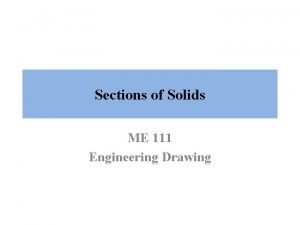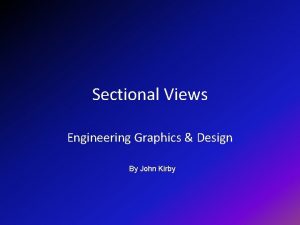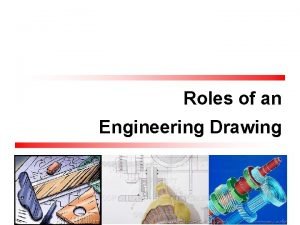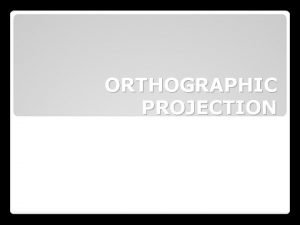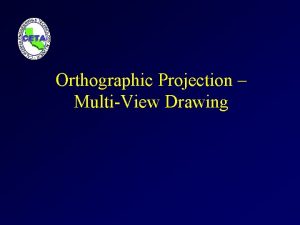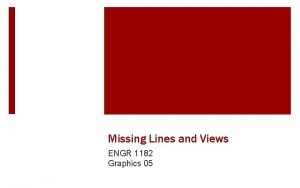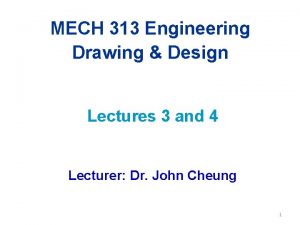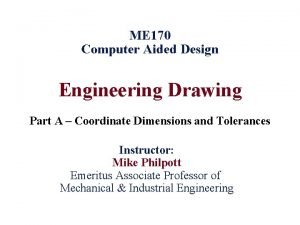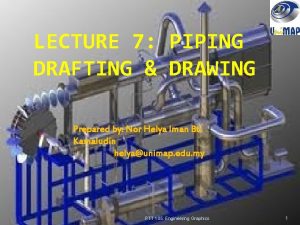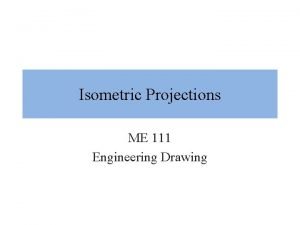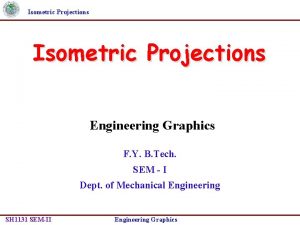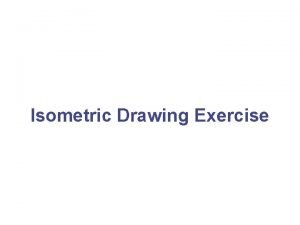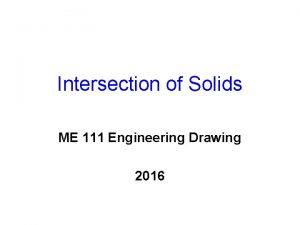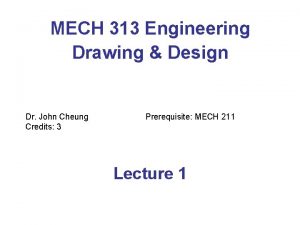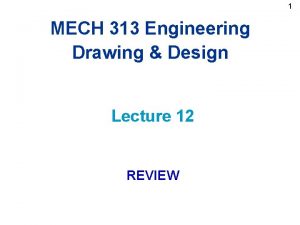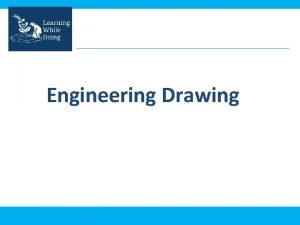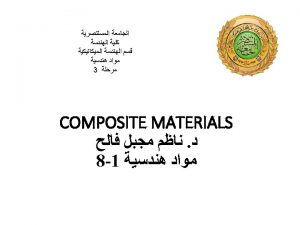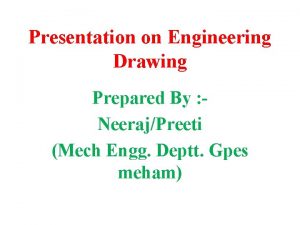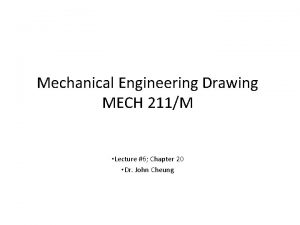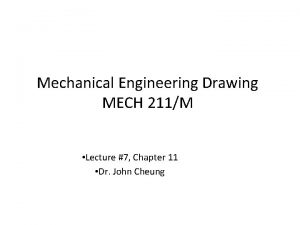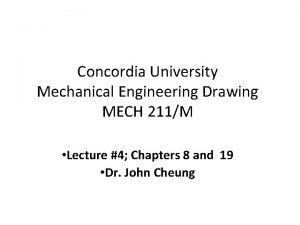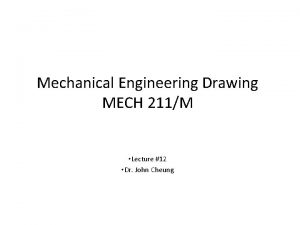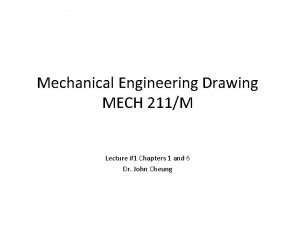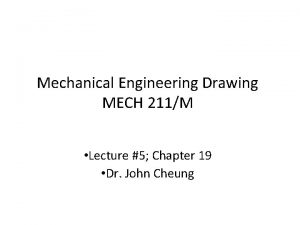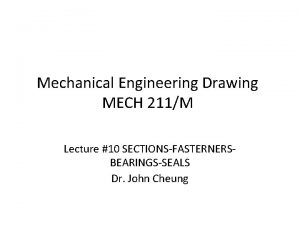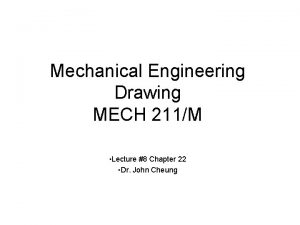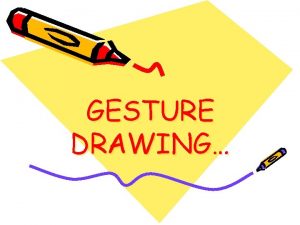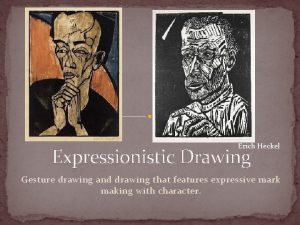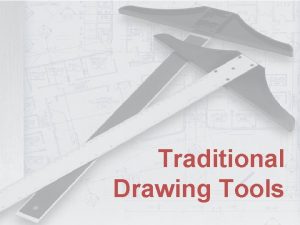MECH 313 Engineering Drawing Design Time Mondays 1












































































- Slides: 76

MECH 313 Engineering Drawing & Design Time: Mondays 1: 15 - 3: 45 p. m. Venue: H-535 Coordinator: Dr. Suraj Joshi Credits: 3 Prerequisite: MECH 211 Lecture 1

Lecturer contact details Instructor: Dr. Suraj Joshi Office: Engineering and Visual Arts Building Room: EV – 2. 255 (Second floor) Phone: 848 -2424 (7019) Office Hours: M _ W _ _ 12: 00 – 13: 00 e-mail: sjoshi@encs. concordia. ca Web site: http: //users. encs. concordia. ca/~nrskumar

Outline of the course Week Chapter Lecture Topics 1 6, 9 Theory of shape description, Sections 2 8 Dimensioning, tolerancing 3 8 Dimensioning, tolerancing 4 16 Geometric dimensioning and tolerancing 5 16 Geometric dimensioning and tolerancing 6 10 Machine elements: threads, fasteners Mid Term break 7 11 Miscellaneous types of fasteners (Mid Term) 8 11, 21 Miscellaneous types of fasteners, Couplings, Bearings 9 21, 20 Seals, Belts 10 20 Chain, Gears 11 14 Introduction to Design, Assembly drawing and design 12 18 Welding, review of Empirical systems 13 Review

About the course n n This is course is not mainly about drawing, but more towards design Extension of Mech 211 which is primarily drawing n Lectures – 2. 5 hours each n 12 Lectures of all - one is an introductory lecture n Midterm test (in week 8) on Mar 2 (tentative) n 8 Assignments n 4 Quizzes n Final exam

Class logistics n 2. 5 continuous teaching hours/ week on Mondays from 1: 15 – 3: 45 at H-535 n 12 lectures + Midterm + Final n In addition, one will be a guest lecture on “Bearings” by SKF (tentative)

Course Webpage n http: //users. encs. concordia. ca/~nrskumar n Password “Mech 313” n n n Password is case sensitive do not type enter after the password, but press the submit button Password for downloading the lecture notes is “student”

Text book and other reference TEXTBOOK • Jensen. C, Jay D. Helsel, Dennis R. Short, ‘Engineering Drawing and Design’, Glencoe-Mc. Graw-Hill, Sixth Edition, SI Metric, 1998 REFERENCES 1. Giesecke F. E. et al. : Engineering Graphics, Prentice Hall 1998 2. Bertoline, G. R. , et al. : Technical Graphics Communication, Times Miror Higher Education Group Inc. , 1995 3. Luzzander, W. V. : Fundamentals of Engineering Drawing, Prentice-Hall, Ninth Edition, 1981

A little strategy - requirements n Attend classes and tutorials n Start solving the assignments immediately after you receive it n Quizzes will be ad-hoc and at best you will have a week’s notice n Solutions to quizzes will be posted at appropriate times

Midterm Exam n You will write the midterm test on Mar 2, 2009 (tentative) during the tutorial period n Open book exam n Duration of the test will be 2 hours n Write the midterm test – this is a good measurement means for your performance

Final Exam n The final exam will have number of multiple choice, short drawings and design questions similar to assignments. n Open book test n Duration of the test is 3 hours n Write the final exam with the confidence that you will do very well

Assignments n n Eight assignments that will require significant effort must be completed during the term The timetable of the assignments is given in the course webpage. No late submissions are accepted, regardless of the reason Submission of assignments “ONLY” in the tutorial period

Quizzes n There will be four quizzes in all during the term n The quizzes will be 15 minutes, comprising 10 multiple choice questions or short calculations n There will be no prior intimation of the dates (mostly a weeks notice) n Attending classes regularly is the only way of not missing the quizzes

The Tutorial n There will be 2 hour tutorials on Mondays after the lecture n There will be TA’s who will give more detailed design and drawing instructions n One or two of the tutorials may be converted to Laboratory n Attending tutorials is necessary as this will help in solving the assignments as well as prepare you for the exams

The Project n There will be a group design project of design problems n Details will be given in one of the tutorials n Formation of groups will be done subsequently within the tutorials as well n The group will have to design and draw a mechanism based on the design constraints defined in the problem

Grading Scheme n n Grade composition: n Assignments: 16% n Project 4% n Quizzes: 10% n Midterm: 20% n Final: 50% To pass the course you have to n Pass the final n Submit your assignments on or before due date n Attend the midterm as well as quizzes and get good marks

Contents of today's lecture • • Theory of Shape Description Sections

Theory of Shape Description

Outline n Different kind of representations n Hidden lines n Inclined surfaces and Circular features n Oblique surfaces n One and two view drawings n Special views n Conventional representation n Intersections n Foreshortened projection

Orthographic Representation Types of Projection • Orthogonal Projection • Requires more than one view to describe an object • Pictorial representation • Isometric • Oblique • Perspective

Orthographic Representation n n Uses parallel orthogonal projection to represent an object Flat, two dimensional views Views are positioned on the page according to projection method An identifying symbol next to the title block indicates which representation method is used

Orthographic Representation Projection Method • First Angle Projection • Third Angle Projection • Reference arrows layout • Mirrored Orthographic Representation

Orthographic Representation Shape Description To project the orthographic viewsperpendicular of the object, to The observer views the object think of the enclosed a “glass box”. each the object six sides of theinbox.

Orthographic Representation Third angle projection • The object to be represented appears behind the coordinate viewing planes on which the object is orthogonally projected • Identifying symbol • The most commonly used method in the US and Canada

Orthographic Representation First angle projection • The object to be represented appears between the observer and the coordinate viewing planes on which the object is orthogonally projected • Identifying symbol • The most commonly used method in Europe and Asia

Orthographic Representation Reference arrows layout • Permits various views to be freely positioned • Used when it is advantageous not to position views according to strict pattern • No identifying symbol needed • Each view identified by a letter.

Orthographic Representation Location of points • X axis represents width • Y axis represents depth • Z axis represents height • Origin (0, 0, 0) can be any convenient place in drawing • The coordinates for HJKL are shown

Orthographic Representation Location of points • H is 0. 0, 4. 0, 8. 0 • The coordinates of the points • J is 0. 0, 6. 5 remain the same, regardless of the • K is 4. 0, 0. 0, 6. 5 views they are shown • L is 4. 0, 8. 0

Orthographic Representation Location of points – Pictorial Drawing • Pictorial drawing is also series of lines connecting points on space • 0, 0, 0 is the absolute co-ord origin of X, Y, Z • 12, 0, 0 means movement in X and not in Y, Z • Similarly for other points

Arrangement of Views Balancing drawing on paper • Drafter must anticipate space required • Draw the views so that they are balanced on the drawing paper • Avoid crowding or excessive space • See page 92 for details

Arrangement of Views Use of Miter Lines • 1. Given the TV & FV, project lines to the right of the TV • 2. Establish how far (from FV) the SV is to be drawn (D) • 3. Construct the miter line at 45° to the horizontal

Arrangement of Views Use of Miter Lines • 4. Drop vertical lines from where the horizontal lines of the TV intersect the miter line • 5. Project horizontal lines to the right of the FV • 6. Complete side view

Parallel surfaces • Parallel surfaces appear parallel to the viewing plane, with and without hidden features • It will appear as a surface in one view and lines in the other views • The length of the lines in other views are same as is in the surface view

Types of Flat Surfaces • Parallel surfaces that appear parallel to the viewing plane, with and without hidden features • Inclined surfaces that appear inclined in one plane and parallel to the other two principal reference planes • Oblique surfaces that appear inclined in all three reference planes

Hidden surfaces and edges Hidden Lines • Consist of short, evenly spaced dashes • Represent edges that cannot be seen from outside • Lines must begin and end with a dash except when it will be seen as an extension of a visible line

Hidden surfaces and edges Application of hidden lines • Lines must begin and end with a dash except when it will be seen as an extension of a visible line • Dashes should join at corners • Arcs should start as dashes at tangent points

Inclined Surfaces • Inclined surfaces that appear inclined in one plane and parallel to the other two principal reference planes • It is seen as a distorted surface in two views and appear as line in one view • A & B appear as shortened in TV & RSV, but the TL of the surface is seen as Lines in FV • True shape ?

Circular Features • Appear circular in only one view • No line shown, when curved surface joins flat surface • Hidden circles, shown as hidden lines • Use of centre lines

Circular Features Center line applications • Thin broken line (alternative long and short dashes) • To locate centre of circles or cylinders • Lines should project beyond the outline of the referred part • Point of intersection of centre lines must be lines

Oblique Surfaces • Oblique surfaces that appear inclined in all three reference planes • Not perpendicular to any principal plane • Appear as surface in all 3 views but never in true shape • How many Auxiliary Views are required to find the TS of oblique surface?

One and two view drawings View selection • Best describe the object to be shown • Minimum number of views to describe object • for simple parts, one or two views often enough • Avoid views with more hidden lines

One and two view drawings One View drawing • Third dim (thickness) expressed as note or symbols • Abbreviations such as HEX ACRFLT, DIA, or • Square sections can be indicated by crossed lines on diagonal • Used even when the surface is parallel or inclined to the drawing plane

One and two view drawings Two View drawing • When cylindrical features have keyway, end view is required to shown them • Usually drafters use two views only to define a part • For cylindrical surfaces, if three views are drawn, any 2 of them will be identical

Special views Partial views • A symmetrical object can usually be adequately shown using a half view and symmetry symbol • For complex shapes, side views sometimes maybe sometimes partial

Special views Enlarged views • Required to show particular feature with greater details, in a complex drawing • Oriented in the same manner as in view • If rotated, must show details of angle, direction etc. .

Special views Key Plan • Used primarily in structural drawings • Includes a small key plan using Bold lines to show relationship between structures on that sheet to the whole work

Conventional representation • Simplify representation of common features • Mainly for improving clarity and reducing drafting time • Clarity, more important than speed

Conventional breaks • Long simple parts (shafts, pipes etc) can be shown using conventional breaks • True length must be shown in dimension • Short breaks are free hand thick lines, while long breaks are thin line with some zig zags • Special break lines are used to show the shape of features

Materials of construction • Symbols are used in sectional views to indicate materials • Symbols for concrete, wood, and transparent materials may be used for outside views

Cylindrical intersections • Conventional representation for intersecting rectangular and circular contours • Intersecting rectangular and circular contours shown conventionally, unless large • Same convention can be used for two cylindrical intersections

Cylindrical intersections • Conventional representation of holes in cylinders

Foreshortened projection • When true projection of feature would result in confusing foreshortening, it should be rotated until it is parallel to the line of projection • Drilled holes also need to be rotated rather than showing true distance

Intersections of unfinished surfaces • Intersection of unfinished surfaces that are rounded or filleted indicated by line at theoretical line of intersection • True projection is often misleading • For large radius no line is drawn

Intersections of unfinished surfaces • Ribs and arms that blend into features terminate in curves called runouts • With manual drafting, small curves – freehand; large curves – irregular curves, compass, template

Sections

Outline n n n n Sectional views More sectional views in one drawing Half sections Threads and Assemblies in section Offset section Ribs, hoes and lugs in section Revolved and removed section Phantom lines

Sectional Views • Shows interior detail • Describes complicated parts • Eliminates the need for hidden lines • Frequently replaces a regular view FULL SECTION

Sectional Views Cutting plane lines • Shows the location of the cutting plane • Has arrowheads to show the direction of sight

Sectional Views Full Section • A section view in which the cutting plane extends entirely through the object in a straight line

Sectional Views Sectional lining • Also called crosshatching • Indicates surface that has been theoretically cut • Lining symbols may indicate the material that makes up the object

Sectional Views General Purpose Sectional lining • To look for • Direction of section lines • Space for accommodating dimensions • Thin parts shown as thick lines • • Drawn with thin lines Lines are usually drawn at 45 to the object’s main outline The same angle and direction is used for the whole ”cut” surface of a part Large areas can be marked with section lining only around the outline

Two or more Sectional Views • If two or more sections appear on the same drawing: • Cutting-plane lines are identified by two identical capital letters • Sectional view subtitles incorporate the identification letters.

Half Sections • Shows one-half of the view in section • Has two cutting planes perpendicular to each other • One quarter of the object is removed

Threads in Sections Representation of threads in drawing • Detailed, Schematic, Simplified

Assemblies in Sections Sectioning in assembly drawings • Section lining on assembly drawings • Shafts, Bolts, Pins, Keyseats

Assemblies in Sections Section lining in assembly drawings • Use opposite directions for section lining on adjacent parts • For more than two parts, use lining at a different angle

Assemblies in Sections Section lining in assembly drawings • Avoid symbolic section lining on drawings to be microformed • If adjacent thin parts are filled in, leave space between them

Assemblies in Sections Parts generally not sectioned: • Shafts • Bolts • Pins • Keyseats • Similar solid parts • A broken-out section of a shaft may be used to describe a key, keyseat, or pin.

Offset Sections • A cutting plane can be bent to include several surfaces

Ribs, Holes, and Lugs in Sections Parts generally not sectioned: • Conventions for aligning ribs, holes and lugs in section

Ribs, Holes, and Lugs in Sections Aligning and rotating • When a true projection would be misleading, the rib, hole or lug is revolved to show its true relationship to the part

Revolved and removed Sections • Ribs, spokes, and arms

Revolved and removed Sections • Show cross-sectional shape of ribs, spokes, or arms • Section is rotated 90 degrees

Revolved and removed Sections • Revolved section: • Section may be superimposed on regular view of part • Regular view is broken if needed for clarity or to add dimensions • Removed section: • Removed to an open area on drawing; may be enlarged

Spokes and arms in Sections • Section lining is not drawn on parts that are • • Not solid Not continuous around the hub

Partial or broken out Sections • Partial sections are indicated with an irregular break line. • A cutting-plane line is not required.

Phantom or Hidden Sections • Used to show interior details of parts that are not symmetric, or mating parts in assembly • A phantom section is a sectional view superimposed on a regular view • The front portion of the object is not removed
 Always every day
Always every day Humanity poem by elma stuckey
Humanity poem by elma stuckey Isometric drawing 30 60
Isometric drawing 30 60 Mech 497
Mech 497 Mehanika fluida ftn
Mehanika fluida ftn Center of pressure equation
Center of pressure equation Mag ing mech
Mag ing mech Nabil
Nabil Stat mech
Stat mech Tds equation in thermodynamics
Tds equation in thermodynamics Stat mech
Stat mech Mag ing mech
Mag ing mech Thermodynamic probability ppt
Thermodynamic probability ppt Rhizomoidy
Rhizomoidy Mech robotix
Mech robotix Mech
Mech Mech
Mech Mech
Mech Trebuchet mech
Trebuchet mech Mech 211
Mech 211 Dihedral angle engineering drawing
Dihedral angle engineering drawing Dr david mech
Dr david mech Oblique drawing
Oblique drawing Engineering drawing and design 7th edition
Engineering drawing and design 7th edition Real time software design in software engineering
Real time software design in software engineering Start time, end time and elapsed time
Start time, end time and elapsed time 100/313
100/313 Ggable
Ggable Ee 313
Ee 313 Cmsc 313
Cmsc 313 Cmsc 313
Cmsc 313 Umbc cmsc 313
Umbc cmsc 313 Csce 313 github
Csce 313 github Ics 313
Ics 313 Uiuc ece 329
Uiuc ece 329 Ece 329 uiuc
Ece 329 uiuc Ee 313
Ee 313 Ee 313
Ee 313 313 date
313 date Csce 313 tanzir
Csce 313 tanzir Cs 313
Cs 313 Pallini neri
Pallini neri 313 3255719
313 3255719 Bradi 313
Bradi 313 Ece 313
Ece 313 Ece 313
Ece 313 Ece 313
Ece 313 Rok 313
Rok 313 313 ce
313 ce Ece 313
Ece 313 Ece 313 uiuc
Ece 313 uiuc Ucc 2-316
Ucc 2-316 Ee 313
Ee 313 Subece
Subece Cmsc 313
Cmsc 313 Christ, be our light
Christ, be our light Jis z 8311
Jis z 8311 Spline shaft technical drawing
Spline shaft technical drawing 3 views of isometric drawing
3 views of isometric drawing Introduction to technical drawing
Introduction to technical drawing Technical drawing vs artistic drawing
Technical drawing vs artistic drawing Isometric projection of sphere
Isometric projection of sphere Section of solids
Section of solids Sections of solids engineering drawing
Sections of solids engineering drawing Types of sectional view
Types of sectional view What is removed section
What is removed section Roles of engineering drawing
Roles of engineering drawing Plan end view elevation
Plan end view elevation What type of drawing do we use miter line?
What type of drawing do we use miter line? Missing view orthographic projection
Missing view orthographic projection Tabular dimensioning
Tabular dimensioning Recess in engineering drawing
Recess in engineering drawing Single line pipe drawing
Single line pipe drawing Technical drawing isometric projection
Technical drawing isometric projection Engineering drawing isometric projection
Engineering drawing isometric projection Basic isometric drawing exercises
Basic isometric drawing exercises Intersection of solids examples
Intersection of solids examples
